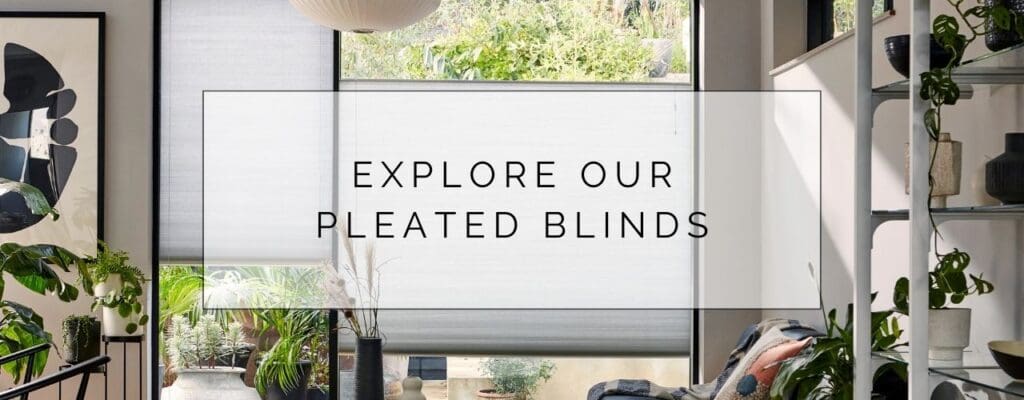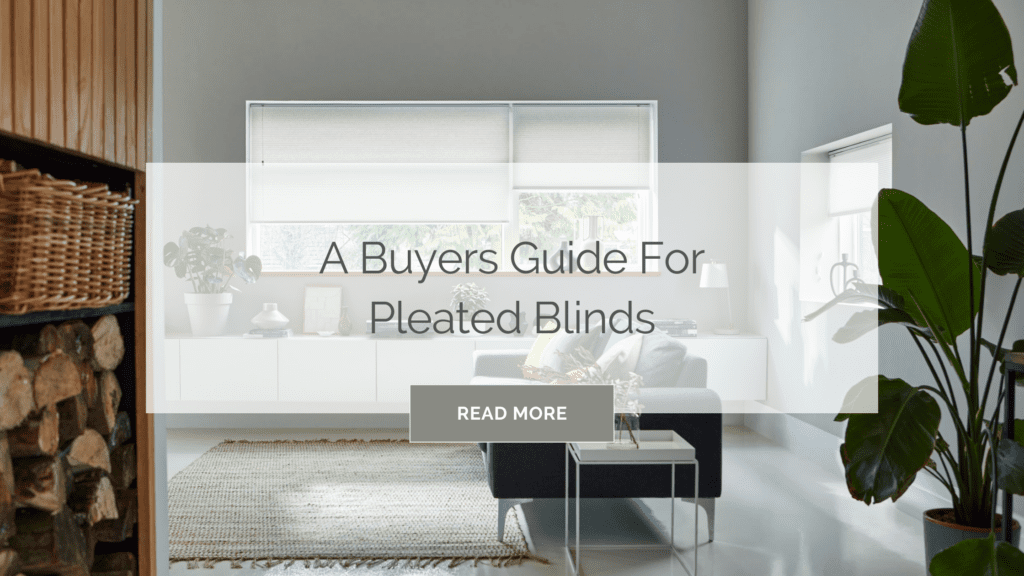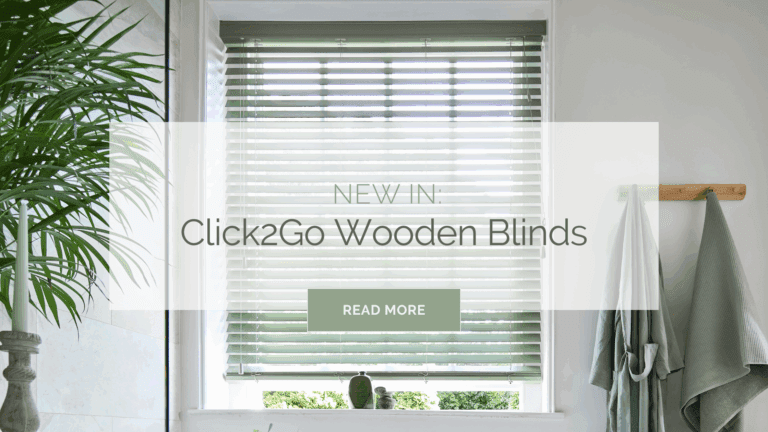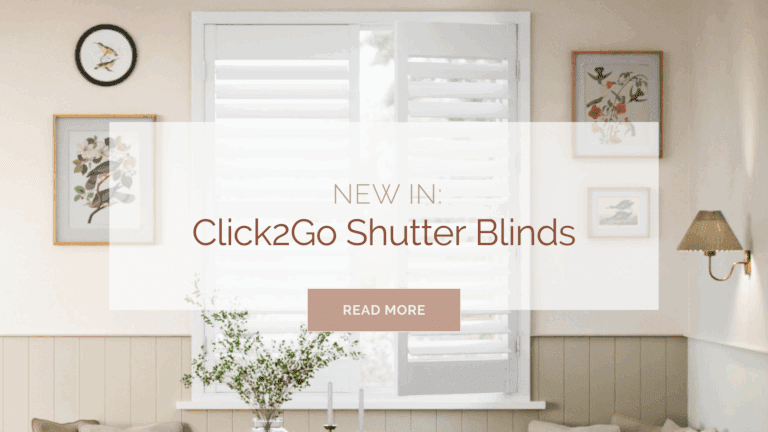Table of Contents
ToggleWhat are Pleated Blinds?
Pleated Blinds are made from two sheets of lightweight fabric that are folded to create an accordion effect. Also known as honeycomb blinds with their beehive-like, hexagonal pockets, they’re the ultimate solution for helping you improve energy efficiency and light control in any room of your home.
Benefits of Pleated Blinds
- They help to insulate your rooms, with a heat reflective lining that keeps you cool in summer and warm in winter
- Pleated Blinds protect your flooring and furniture against harsh UV rays to help prevent fading over time, especially in large window spaces that receive high sun exposure such as in a conservatory or a bay window
- They’re available with a No Drill fitting system, with either a unique, PerfectFIT frame that clips to your uPVC windows or a tension rod inside the headrail that installs the blind between your window recess
- Pleated Blinds can complement almost any décor with their versatile, minimalist aesthetic and are available in an array of colours

DuoLight Grain Fawn Thermal Blind
Types of Pleated Blinds
- Top-Down / Bottom-Up Pleated Blinds – Top-Down / Bottom-Up Pleated Blinds feature a free-floating system that either allows light to enter through the top or bottom of the blind for customised shading and privacy
- Night and Day Duo Pleated Blinds – Night and Day Pleated Blinds feature a sheer fabric on the top half of the blind to let light filter through an opaque fabric on the lower half to allow for maximum light or maximum shade
- Cordless Pleated Blinds – Cordless Pleated Blinds have an easy to lift mechanism located at the bottom of the blind instead of cords at the side, making these a child-safe, pet-safe window covering
- Double Thermal Blinds – If you’re looking to further improve energy efficiency, our Double Thermal Blinds feature two layers of honeycomb pockets to trap heat and further help to regulate your rooms temperature
Linings For Pleated Blinds
- DuoLight – our DuoLight lining allows gentle light to enter your space through the light filtering fabric, so you can keep sun glare to a minimum whilst retaining your privacy when you need it most
- DuoShade – our DuoShade lining features a blackout, opaque fabric that stops the sun in its tracks, creating a blackout effect when lowered
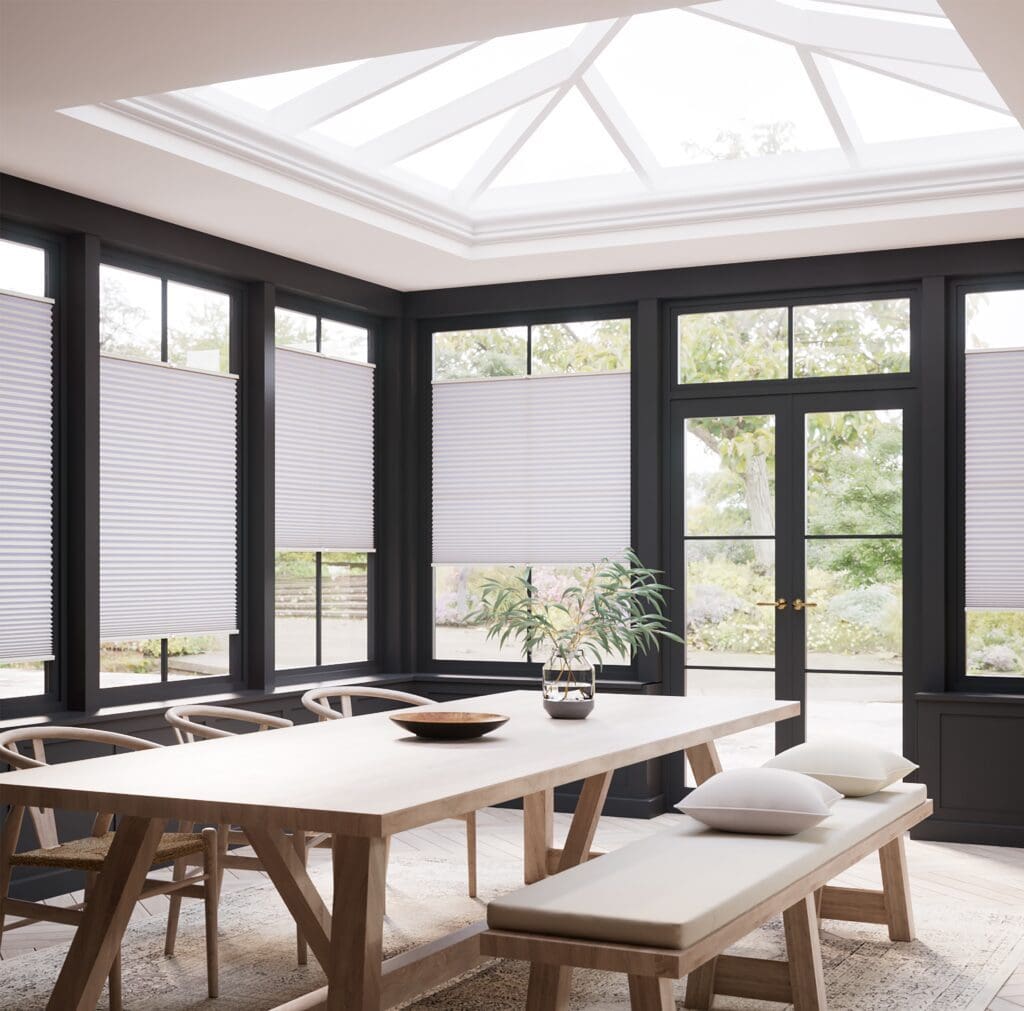
Duolight Wisteria EasiFIT Thermal Blind
Are Pleated Blinds Suitable for Conservatories?
Top down / bottom up Pleated Blinds work wonders in conservatories, fitting seamlessly to your uPVC window frames. As conservatories are known to have high sun exposure in the summer months, you’ll be able to reduce glare whilst keeping your space feeling airy and bright.
Are Pleated Blinds Suitable For Kitchens?
If your kitchen is overlooked by neighbouring houses, Pleated Blinds will help retain your privacy, whether you choose a light filtering or blackout fabric. Selected Pleated Blinds are also suitable for patio doors and BiFold doors in your kitchen – especially with a day and night style that offers tailored shading and precise light control throughout the day.
Are Pleated Blinds Suitable For Living Rooms?
A Pleated Blind in your living room will help reduce sun glare for when you’re watching TV or relaxing on the sofa. Plus, if you choose a No Drill Pleated Blind that fits inside your recess, this will leave plenty of space for you to add a decorative touch to your windowsills with photo frames, ornaments and more!
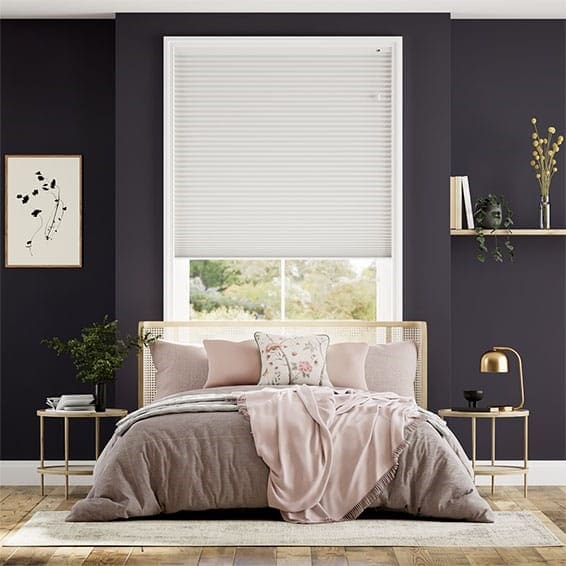
How to Clean Pleated Blinds
Pleated Blinds are easy to clean and maintain, however, as they’re made from lightweight fabric, you’ll still want to take precaution whether you’re dusting them or removing stains. For dusting, use the upholstery attachment on your vacuum and gently wipe the fabric from left to right (just don’t push against the fabric too hard to avoid ripping the blind).
To remove stains from Pleated Blinds, take warm water and a soft cloth to pat the affected area clean and leave them out to dry.
For more tips, refer to our guide on cleaning Pleated Blinds.
How to Measure for Pleated Blinds
For traditional Pleated Blinds, there are two types of measuring options:
- Recess fitting – To measure for Pleated Blinds inside your recess (recess fitting), simply measure your windows from top to bottom and from side to side. Measure in three places for both height and width and take the shortest measurement
- Exact fitting – To measure your Pleated Blinds outside your recess (exact fitting), measure the sides of your recess then add on a little extra so the blinds overlap your window space. We recommend adding at least 70mm at the top and 50mm each side to prevent light seepage as much as possible
Measuring for Pleated Blinds in a conservatory will be different due to the blind fitting neatly inside the frame of your window or door:
- Measuring for PerfectFIT Pleated Blinds – Measure the visible glass area of your window or door up until where the glass meets the rubber bead on the edges of your frame. Then measure the depth of the window from glass to beading (this is usually between 18 and 24mm)
- Measuring for EasiFIT and ClickFIT Pleated Blinds – Similar to PerfectFIT Pleated Blinds, measure the visible glass area of your window or door from the inside edges of the rubber bead inside your frame. Measure the top middle and bottom of the glass and note down the nearest measurement
